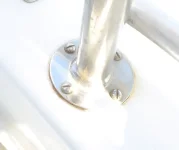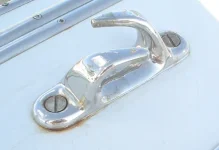Tawney1
Active member
- Joined
- Apr 11, 2006
- Messages
- 154
- Status
- OWNER - I own a Hatteras Yacht
- Hatteras Model
- 61' MOTOR YACHT (1980 - 1985)
There is discoloration around a number of our stainless stantions and deck cleats, as can be seen from the attached photos.
What is the cause, how does one get rid of it, and what can be done to prevent it in the future?
Many thanks,
Paul
What is the cause, how does one get rid of it, and what can be done to prevent it in the future?
Many thanks,
Paul



